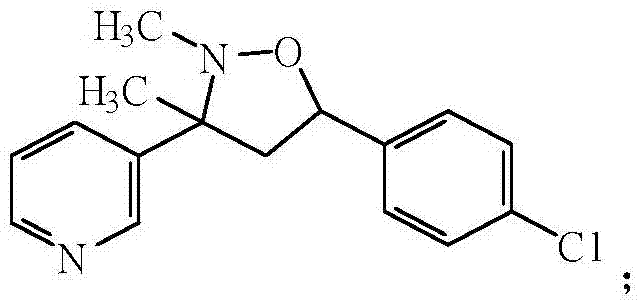Fungicide composition with two active components and application of fungicide composition
A technology of active components and compositions, which is applied in the field of fungicidal compositions, can solve problems such as waste and increase the pressure of environmental protection, and achieve the effects of prolonging service life, reducing costs, and delaying drug resistance of pathogenic bacteria
- Summary
- Abstract
- Description
- Claims
- Application Information
AI Technical Summary
Problems solved by technology
Method used
Image
Examples
Embodiment 1
[0051] Example 1 Test of Controlling Tomato Leaf Mold
[0052] The potted tomato seedlings at the 5-leaf stage of "L402" were sprayed with active component A, active component B and the aqueous solution (concentration as described below) of the fungicidal composition respectively. After 24 hours, the tomato leaf mold spores The suspension was inoculated on the tomato leaves, and then cultured in a climate chamber with a temperature of 24±1°C and a relative humidity of 90±5%. After 24 hours, it was moved to the greenhouse for normal management. After 10 days, the degree of pathogen infection on the leaves was measured. . See Table 1 and Table 2 for the activity data results of each individual active component and the composition of the present invention against tomato leaf mold. Composition interaction analysis uses the Colby formula described above.
[0053] The results show that the observed potency values of the composition are all greater than the calculated potency val...
Embodiment 2
[0059] Example 2 Experiment of Controlling Cucumber Botrytis
[0060] The potted 2-leaf stage cucumber seedlings with the kind being "Xintai Mici" were sprayed with active component A, active component B and the aqueous solution (concentration as described below) of the fungicidal composition respectively, and after 24 hours, the cucumber ash The mildew spore suspension was inoculated on cucumber leaves, and then cultured in a climate chamber with a temperature of 18±1°C and a relative humidity of 90±5%, and the degree of pathogen infection on the leaves was measured after 4 days. See Table 3 and Table 4 for the activity data results of each individual active component and the composition of the present invention against gray mold of cucumber. Composition interaction analysis uses the Colby formula described above.
[0061] The results show that the observed potency values of the composition are all greater than the calculated potency values, and the composition exhibits a ...
Embodiment 3
[0067] Example 3 Control of rice sheath blight test
[0068] The potted rice seedlings at the 2-leaf stage with the variety being "Liaojing 10" were sprayed with active component A, active component B and an aqueous solution (concentration as described below) of the fungicidal composition respectively, and after 24 hours, the rice sheath blight The mycelia block of the pathogen was inoculated at the base of the rice seedling, and then cultured in a climate chamber with a temperature of 25±1°C and a relative humidity of 70±5%. After 7 days, the degree of pathogen infection on the leaf sheath was measured. See Table 5 and Table 6 for the activity data results of each individual active component and the composition of the present invention for rice sheath blight. Composition interaction analysis uses the Colby formula described above.
[0069] The results show that the observed potency values of the composition are all greater than the calculated potency values, and the compos...
PUM
 Login to View More
Login to View More Abstract
Description
Claims
Application Information
 Login to View More
Login to View More - R&D
- Intellectual Property
- Life Sciences
- Materials
- Tech Scout
- Unparalleled Data Quality
- Higher Quality Content
- 60% Fewer Hallucinations
Browse by: Latest US Patents, China's latest patents, Technical Efficacy Thesaurus, Application Domain, Technology Topic, Popular Technical Reports.
© 2025 PatSnap. All rights reserved.Legal|Privacy policy|Modern Slavery Act Transparency Statement|Sitemap|About US| Contact US: help@patsnap.com



